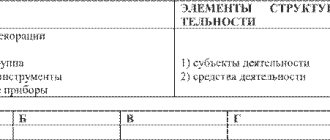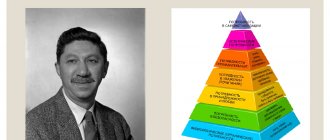There is a rather vague idea of who the marginalized are. Some believe that these are people who separated from society of their own free will, while others are convinced that society itself left them outside of society. Still, I would like to have a more specific understanding of this term.
Every person, starting from birth and throughout his life, interacts with society. First, the child begins to go to kindergarten, then school, where he makes his first friends. Then the student years begin and the increase in new acquaintances and friends begins. Then work and so on. A person has his own family and his close circle, friends. But having fallen out of this society familiar to a person, he automatically becomes marginal in the social environment where he finds himself. But this does not mean at all that this person is “lost” to society or that he has sunk to the bottom.
Who are the marginalized?
Marginal is a certain asocial object located on the edge of social, political, economic or other groups of people.
It is believed that slaves who received freedom from their masters were the first to be called this. But it so happened that society could not accept these people and then they began to unite into their own communities, subcultures and castes.
In the 20s of the twentieth century, this word was widely used to define emigrants in America who were unable to readjust and socialize in another society. That is, this is a person who left his usual way of life, his country, his previous job and family in order to completely change his life (presumably for the better), but in the end, nothing worked out for him in a new country and society. Their readaptation to the prevailing social behavior in the States was called marginalization.
It turns out that a marginalized person is a person who, voluntarily or unwillingly, finds himself outside the boundaries of the usual society in which he finds himself. In other words, he is an “outcast.”
Marginalized people live in a rather stressful situation for themselves, often experiencing emotional stress and increased sensitivity to the outside world. Many of the marginalized experience uncertainty and even confusion in their self-awareness due to isolation from society and not understanding how to identify themselves. And someone, when interacting with other people, displays hostile sentiments.
Reasons for the emergence of marginal layers
The third type of behavior during the period of “cultural gap” is focused on constructive coping with the new and unmastered; it can be conditionally called adaptive. This situation gives them a unique opportunity to introduce cultural innovations and shape future cultural norms and patterns. Mobility and rapid adaptation are characteristics of the third, constructive type of response to a stressful cultural situation. Marginalized people can move into a state of consolidation with the dominant culture, they can change their previous status and regain it. Currently, in the Russian situation, there are many groups of “new marginals”: people of the first traditional type who have lost social support (unemployed, migrants, refugees). There is another option - groups that feel marginalized from the dominant culture, are aggressive and destructive and try to establish their culture or subculture (national culture, sexual minorities, rock culture) as stable and with priority values and norms. This is another trend of cultural marginality in modern times.
The innovative, playful fringes of the turn of the 20th and 21st centuries are very different from the fringes of the 1970s and 1980s, such as dissidents. New literature attracted readers by the loss of ethical criteria as the dominant quality of artistic consciousness. Ethics in postmodernism is situational, and a person behaves situationally. For the playful, stylistically active version of postmodernism, all previous cultures and cultural styles are merely material for its “own language.” This trend, in our opinion, is perhaps the most dangerous, since the destruction of spiritual values that were sacred to the Russian mentality was followed by the destruction of social structures. However, for some researchers, modern marginalism in Russia is coming to an end. Even if the signs of this “new period” are not obvious or do not appear, we believe that it must inevitably come, because it is in the logic of the development of culture, which exists according to its own laws, has its own mechanisms and its own “cultural heroes.”
2.3 The relationship between the qualitative characteristics of the population and the processes of social marginalization of modern society: positive and negative features
The erection of social barriers and demarcations that limit access to another group or limit a group to itself is called social reservations. Numerous studies show that social mobility occurs with particular intensity in transitional societies that are developing rapidly. Stabilization of social life leads to a decrease in social mobility. The higher the social class, the more difficult it is to penetrate. The tendency towards social closure is inherent in all societies. Social movements of individuals have objective indicators: taking a new position, increasing income, acquiring property, etc. But a change in objective indicators in an individual’s life does not automatically mean a change in his social status. To completely change their social status, individuals often face the problem of entering a new subculture of a group with a higher status, as well as the accompanying problem of interaction and communication with representatives of the new social environment. To overcome the cultural barrier and the barrier of interaction and communication, it is necessary to change the previous way of life, form new models of typical status behavior, change the social environment, etc.
Who can be classified as a marginalized population?
Marginal means non-standard. Representatives of sexual or national minorities are also sometimes called marginalized.
And yet, all these definitions are very vague and do not provide any specifics. Then how to determine whether a person belongs to the marginalized or not?
It turns out that a marginal lifestyle can be led by both an individual and a whole group of people. In the case of a whole group of people, an entire marginal environment arises within an already formed society (such as religious sects, national diasporas and ethnic minorities).
One of the striking examples of the marginalized in our country are emigrants from Central Asia (former republics of the Soviet Union). Families in which a man is forced to work, improve his language skills and interact with a new society, the children of this family go to local schools, where they socialize, interact with people of a different culture and learn a different language. And the mother of this family, for example, may not even know the Russian language and may not interact in any way with the local population, but this will not prevent her from living in a completely different, unfamiliar society, walking the streets and shopping in stores. It turns out that the mother of the family is already cut off from her society, but has not yet been socialized in the new society.
From here we can conclude that a person can become marginalized both voluntarily (a striking example of which are representatives of countercultures, a number of youth subcultures or individuals with a different perception of the world from the generally accepted one), or as a result of political, economic or other circumstances that we are more Let's look at it in detail below.
The concept of “Marginality”
A different situation arises when the process of restructuring in society is delayed, and marginalization becomes an excessively widespread and long-term social phenomenon. In this case, the marginalized acquire the features of social stability; they “hang” on the fault lines of social structures. This usually occurs as a result of policies of artificial marginalization, that is, the transfer of hundreds of thousands or even millions of people into peripheral, discriminatory or restrictive positions. Thus, even in pre-revolutionary society there was a deliberate policy of excluding political opponents of the regime (revolutionaries), as well as people who were subject to discrimination and restrictions based on nationality or religion. However, in post-revolutionary society, artificial marginalization affected entire categories and groups. Society was divided into opponents and supporters of the regime. Groups that did not exist before were artificially promoted by the regime. Thus, the special settler had no analogue in pre-revolutionary society, but existed in Stalinist society from 1930 to 1955, that is, a quarter of a century. Never before has there existed such a force as the Outback Militia - children of the “disenfranchised” who have reached conscription age and were drafted not into regular units of the Red Army, but into the Outback Militia - an analogue of the later Construction Battalion. The group existed from 1930 to 1937. Thus, artificial exclusion in Stalinist society acquired enormous, catastrophic proportions and became an organic accompaniment of repression and a means for political and even economic decisions (the creation of a forced labor system). Unfortunately, the topic of “marginality and marginal groups” has not been sufficiently developed in relation to Russian history of the twentieth century. First of all, it is necessary to highlight the work of sociologists dealing with the problems of theory and, to some extent, the history of the marginalized in the first half of the twentieth century. The most complete and qualified theory of the subject, along with excursions into our history, is presented in the publications of E. Starikov. He has priority in posing this problem as research and the most important for understanding changes in the social structure of Russian society in the current century. He also raised the question of the depth and scale of the processes of refeudalization of post-revolutionary society. Thus, E. Starikov formulated the hypothesis that when a traditional society is destroyed, if new structures are not quickly consolidated, the fragments of traditional society will be restructured earlier and the newly formed social system will be an order of magnitude lower than the destroyed one, i.e. more archaic. And this applies to all elements of the structure. He was also the first Russian sociologist to put forward a hypothesis about the restoration of the class model of society in Russia after the revolutions of 1917, albeit in a new, Soviet guise. In a similar way, the works of M. Voslensky were written about the emergence and development of nomenklatura as a special stratum. Voslensky directly states that the nomenklatura is a product of a declassed society and that the nomenklatura itself is, in fact, a marginal group. A number of Russian researchers (N. Ivanova, V. Shiromskaya, etc.), analyzing the social structure of the beginning of the century and post-revolutionary years, also come to the conclusion that when describing the picture of structural changes and shifts, it is impossible to understand the essence of changes in the social structure without taking into account the processes of marginalization wt.
Marginals and lumpen
Many people consider the concepts of marginalized people and lumpen to be synonymous, but this is a mistaken opinion.
Lumpen is a person who consciously leads an antisocial lifestyle and does not strive to improve it. These are morally degraded, degraded people who are constantly sinking lower and lower. This man refuses to work and leads a vicious lifestyle.
The following are considered to be lumpen:
- Persons without a fixed place of residence;
- Drug addicts;
- Alcoholics;
- Known dependents;
- Working class with income below the subsistence level;
- Criminals, both in prison and those returning from prison.
All lumpen people, as a rule, lack motivation to act. They have no goals or desire to change their financial situation or improve their social status. Typically, lumpen people communicate only with their own kind, without perceiving other people, which is often mutual.
In some cases, the marginalized can be lumpen. But still, marginalized people are people who could not fit into the established society, who have their own philosophy and lead a non-standard and, perhaps, incomprehensible way of life for society.
Lumpen people tend to beg for money in order to provide themselves with alcohol or at least some food.
But you need to understand that marginality is not synonymous with words such as “ragamuffin,” “tramp,” “homeless,” “alcoholic,” or “drug addict.” And the word lumpen is more suitable for defining these concepts.
When synonyms for the marginal can be “informal”, “freak”, “outcast”, “nihilist” or “déclasse element”.
From this we can conclude that the marginalized and the lumpen have nothing in common.
Marginality and poverty
Karl Marx, for example, classified tramps, beggars, lowlifes and bandits as marginalized people. But in modern society this definition is not correct. Moreover, a person’s marginality does not always coexist with poverty.
As we have already found out earlier, a very wealthy person who differs from the larger mass of the population or, for example, who has decided to leave a big city for a village, can also become marginalized.
There is also such a thing as a downshifter - this is a person who has decided to limit or minimize as much as possible any communication with people outside his family. These are marginalized people who are content to be in a borderline state in which they feel they experience freedom. Typically, downshifters connect their lives with art: they write books, paintings, music. Their work is always in demand and is in demand, since the author has an unconventional vision of the world and powerful energy.
Is marginality good or bad?
The term marginal is sociological, denoting only the intermediateness between different groups of society. Therefore, it would not be entirely correct to consider this term negative.
Throughout the history of mankind, there have been people who have been excluded from society. Of all the well-known ones, we can highlight such writers as Sakharov and Tolstoy or Stepan Razin and Emelyan Pugacheve. And the most striking example of marginality, perhaps, will be Jesus Christ (half God, half man in Christian culture). From the moment of his birth, starting from the non-standard place of birth (in a stable) and throughout his entire life, Jesus lives, as it were, in his own world and does not at all try to “merge” into the society in which he finds himself. On the contrary, by preaching, he seems to be contributing to the destruction of the society into which he came. And at the same time, he became known and revered not only in Christian culture, but also in Islam (Prophet Isa), as well as in secular culture.
And Leo Tolstoy, for example, liked life in the village and he denied most of the privileges of the noble class. He created revolutionary publications on paper. And despite the fact that Tolstoy interpreted Christian concepts in the same way, the Orthodox Church expelled him.
Nevertheless, it is not always that a marginal person is ready to come to terms with his uncertain status and makes every effort to become part of the new society. By the way, based on the observations of sociologists, it was noticed that it is in connection with this factor that some emigrants or visitors achieve great heights in business and science.
But like any life situation, we can consider the concept of “marginal”, both from a positive and negative side.
The positive ones include:
- Individuality. These people differ from society and, in their internal concepts and beliefs, go beyond the herd instinct. Often such people become famous scientists or artists.
- A non-standard view of familiar things also helps them in creating something new, for example, a new business, the idea of which no one else has thought of.
- Marginalized people are very flexible, which helps them achieve their goals and easily move to another city or country for work, for example.
On the negative side, perhaps:
- It is often difficult for a marginalized person to satisfy his basic needs on his own.
- In many cases, marginality arises due to unfavorable living conditions, revolutions or wars in the country.
- The majority eventually develops a craving for illegal activities, and then the marginalized become dangerous to society.
The concept of marginality. Marginalized layers and groups of the population
Marginality is a sociological concept that denotes the intermediate, “borderline” position of a person between any social groups and statuses, which leaves a certain imprint on his psyche.
A marginal group of people is a group that rejects certain values and traditions of the culture in which this group is located and asserts its own system of norms and values.
[edit]Individual and group marginality
Individual marginality is characterized by the individual's incomplete inclusion in a group that does not fully accept him, and his alienation from the group of origin that rejects him as an apostate. The individual turns out to be a “cultural hybrid”, sharing the life and traditions of two or more different groups.
Group marginality arises as a result of changes in the social structure of society, the formation of new functional groups in economics and politics, displacing old groups, destabilizing their social position.
51. Theory of social mobility. Types of social mobility. Migration.
| Social mobility is a change by individuals or groups in their position, place, social status in the structure of society. introduced by P.A. Sorokin, who considered social mobility not simply as the transition of one social group to another, but as any change in social status. social mobility is divided into two types: Vertical mobility involves moving from one stratum to another. Depending on the direction of movement, there is upward mobility (social ascent) and downward mobility (downward movement). Horizontal mobility implies the transition of an individual from one stratum to another, located at the same level (from the Orthodox to the Catholic religious group). Such movements occur without a noticeable change in social position in the upright position. Social mobility is measured by the following indicators: - mobility distance (the number of steps or levels to which social objects managed to rise or fall); - volume of mobility (the number of objects that moved vertically along the social ladder over a certain period of time). The degree of social mobility is an indicator of the level of development of society: the higher this level, the more social levels and positions society presents to social objects for their movements. + next question!!! Labor migration is the movement of the working-age population. The main criteria for classifying migrations are: · direction of migration; · degree of organization of migrations; · temporary sign; · reasons for migration. Based on the direction of migration flows, migration is divided into two types: a) external; b) internal. External migration is the departure of the population abroad (emigration) or entry from abroad into a given state (immigration). Internal migration combines migration processes within the country. From the point of view of administrative division, migrations are divided into intra-regional, inter-regional and inter-district. Depending on the purpose and status of settlements, flows are distinguished: village-city, village-village, city-city, city-village. Based on the degree of organization, two types of migration are distinguished: organized and unorganized. The main types of organized migration are: public conscription, agricultural relocations, organized recruitment of labor, service transfers to other areas, distribution of graduates of vocational schools, technical schools and universities. Unorganized, or individual, migration is territorial movements of the population caused by reasons such as the desire to improve one’s financial situation in a new place, start a family, get an education, etc. When classifying the migration movement by reasons, one should highlight economic, social, cultural, political, ethnic (national), religious, racial, military, demographic (family unification, marriage migration), etc. Based on the time of movement, all types of population migrations are divided into: irrevocable, forever, and temporary migration. 52. Social mobility and type of society. The mechanism of social infiltration. There are two main types of social mobility - intergenerational and intragenerational, and its two main types - vertical and horizontal. They, in turn, fall into subspecies and subtypes , which are closely related to each other. Intergenerational mobility involves children achieving a higher social position or falling to a lower level than their parents. Intragenerational mobility occurs where the same individual, unlike his father, changes social positions several times throughout his life. Otherwise, such mobility is called a social career . The first type of mobility refers to long-term, and the second - to short-term processes. In the first case, sociologists are more interested in interclass mobility, and in the second, in the movement from the sphere of physical labor to the sphere of mental labor. The mechanism of infiltration in vertical mobility. In order to understand how the process of ascension occurs, it is important to study how an individual can overcome barriers and boundaries between groups and rise upward, i.e. improve your social, professional, economic and political status. This desire to achieve a higher status is due to the achievement motive, which every individual has to one degree or another and is associated with his need to achieve success and avoid failure in the social aspect. The actualization of this motive ultimately gives rise to the force with which the individual strives to achieve a higher social position or to maintain his current position and not slide down. The realization of the power of achievement depends on many factors. Scheme of infiltration of an individual into a layer with a higher status of the situation developing in society. Typology of society Marx identified 5 types of society: primitive communal, slaveholding, feudal, capitalist, communist (or socialist). According to the Marxist tradition, the type of society is determined by the method of production, i.e. how the econometrics are used and controlled. resources. Classification of societies can also be made on the basis of their dominant religion (for example, Muslim society) or language (for example, French-speaking society). There is a classification according to the method of obtaining a livelihood: a society of hunters and gatherers, horticultural, agricultural and industrial (G. Lenski, J. Lenski). Tennis classifies societies into traditional (implying a peasant community) and industrial (industrial-urban society). 53. concept of social change. Types of Social Change Social change is the transformation that occurs over time in an organization, the structure of society, patterns of thinking, culture and social behavior. This is the transition of a social object from one state to another, a significant transformation of social institutions, the plurality and diversity of social forms. Types: 1. by assessment of changes (progress, regression) 2. by time (short-term, medium-term, long-term) 3. by level (individual, group, public, etc.) Forms of social. Changes 1. functional – are adaptive in nature, helping to adapt to changes in the natural and social environment and the internal needs of the social system. 2. social modernization – progressive social changes as a result of which the social system improves the parameters of its functioning. 3. transformation - transformations in society as a result of a certain social change, both purposeful and chaotic 4. social crisis - a transitional state of a social system that involves radical changes to solve emerging problems. 54. social processes. Concept, types of Social processes Social process is a consistent change of states, stages of development of social systems and phenomena; a set of sequential actions to achieve some result. Classification of social processes Directed - irreversible social processes, in which each subsequent stage differs from the previous one and includes its result, and an earlier stage prepares the conditions for a later one. Undirected - changes that are either purely random, chaotic in nature, not based on any pattern, or are subject to certain repeating or at least convergent patterns, with each subsequent stage being identical or qualitatively reminiscent of previous types. Reversible – processes that lead the system to change, but then the system returns to its previous state. Irreversible Linear - gradual continuous upward or downward changes in the system Stepwise - gradual increase in the quantitative potential of changes that at a certain moment lead to a qualitative leap or breakthrough Cyclic - periodic repetition of certain phases of the development of the system Spiral - upward or downward cyclical movements Cultural processes Acculturation - processes of mutual influence cultures, the perception by one people, in whole or in part, of the culture of another people, usually more developed. Assimilation is the loss of one part of society (or an entire ethnic group) of its distinctive features and its replacement with those borrowed from another part (another ethnic group). In general, this is an ethnocultural shift in the self-awareness of a certain social group, which previously represented a different community in terms of language, religion or culture. Amalgamation is the biological mixing of two or more ethnic groups or peoples, after which they become one group or people. Elements of the social process 1. subject 2. object 3. social environment 4. result 55. reforms and revolutions. Distinctive features of a revolution are sharp and profound changes in all social life, as a result of which society moves from one qualitative state to another; a set of a large number or complex of reforms carried out simultaneously with the aim of changing the foundations of the social system Signs: 1. gross violence 2. loss of life 3. mass disasters of the population 4. lawlessness 5. unrest in society Reform - changes that do not lead to mass violence, rapid change of political elites, rapid and radical changes in social structure and value orientations. Reforms involve a gradual transformation of certain social institutions or spheres of life. In addition to revolutionary experiments, there are other ways to improve and reconstruct social organization. These fundamental canons are: 1. Reforms should not violate human nature and contradict its basic instincts. The Russian revolutionary experiment, as well as many other revolutions, give us examples of the opposite. 2. A thorough scientific study of specific social conditions must precede any practical implementation of their reform. Most revolutionary reconstructions did not follow this rule. 3. Every reconstructive experiment should first be tested on a small social scale. And only if it demonstrates positive results, the scale of reforms can be increased. The revolution ignores this canon. 4. Reforms must be implemented through legal and constitutional means. Revolutions despise these restrictions. |
What can a marginal status lead to?
No one will ever be able to say exactly how a person’s adaptation will proceed in a completely new social environment, since it depends on a large number of external and internal factors. But if we consider the most unfavorable scenario, then most likely a conflict situation of a multidirectional nature will arise:
* External - the aggressive attitude of the marginalized in relation to the attacks of society; * Internal - the marginalized person is torn by contradictions due to the fact that he cannot find his place in the new society.
But if they demonstrate their flexibility, skill and desire to adapt to the new society, the marginalized person has every chance of leaving this status as soon as possible, becoming part of the new society.
Marginalized people in society
Due to the fact that the worldview and lifestyle of the marginalized are very different from the majority of representatives of other social groups who have traditional cultural and value orientations, they pose a kind of problem for society as a whole, since their socially effective manifestations sometimes give rise to conflict situations .
As a rule, this is why people with a marginal lifestyle cannot (or do not want) to fully identify themselves with different social groups and be identified as their members. As a result, most people in society reject such an individual, which leads to a situation of social alienation and loneliness. Life for representatives of marginalized groups is, as a rule, very difficult.
This is due to the fact that they are either unable to achieve a high rank in society through their efforts, and then society at least partially compensates for their powerlessness (for example, this can be expressed in cash benefits for the disabled, the poor, pensioners, the unemployed), or in their behavior ignore generally accepted norms of interaction, which can only increase alienation from society.
In sociology, the term “marginal” refers to individuals and groups that are located on the “outskirts,” on the “sidelines,” or simply outside the framework of the main structural divisions characteristic of a given society or the prevailing sociocultural norms and traditions.
A typical example of a marginal personality is a migrant from a village to a city. Having arrived for permanent residence in the city, he finds it difficult to get used to the new rhythm of life, new orders and rules, and behavioral stereotypes. He is no longer a rural resident, since he constantly lives in the city, but he is also not yet a city dweller, since he has not yet adapted to the urban cultural environment; previously learned norms of lifestyle are constantly visible in his actions.
The behavior of a marginalized person is characterized by continuous extremes: he can be overly passive, or, conversely, very aggressive, he can easily violate moral and legal norms and is capable of completely unpredictable actions.
Such a person lives simultaneously in two worlds, without being adapted to either of them. Consciousness bifurcates, he easily loses his bearings, becomes a convenient object for political manipulation, and easily falls into aggression or social apathy.
Cut off from his social roots, such a person experiences a feeling of constant dissatisfaction, not without reason seeing the main and main reason in social changes.
Marginal groups arise during mass migration (refugees) or in conditions of “pushing” a certain number of the population beyond the boundaries of socially significant structures (loss of work, home, deprivation of civil and political rights, etc.). The threat posed by this layer is due to the fact that its representatives lose their functional (professional, production and others), and then many other connections with society, and find themselves outside the network of social control.
Factors of marginality
There are six main types of marginal personality:
- Political marginalized are those who are forced to leave their country due to the failure to accept new policies in the country.
- Children born in mixed marriages can be ethnically marginalized. Nowadays, this point is gradually losing its relevance due to the tolerance of society, but just a few years ago in America, children born to white emigrants or the indigenous population of African slaves were outcasts in society for a long time.
- Religious marginalized people are those who could not identify themselves with any of the five major world religious faiths. If a person has created his own “church”, a religious movement, he is also considered a religious fringe.
- Social marginals are usually people who have become victims of cataclysms and natural disasters, political upheavals and wars, as a result of which they lose their social status and are unable to adapt to the new conditions that society offers them.
- The economic marginalized are usually people who are unemployed and below the poverty line. These are people who are able to work and provide themselves with everything they need, but at their own request or forcibly lose their jobs and, accordingly, the ability to provide for themselves. Instead of correcting and improving their situation, they rely on social benefits and the help of strangers (begging for alms). *Super-rich people are also in some cases considered marginalized, arguing that they are isolated from society.
- Biological marginalized people are people with disabilities due to health conditions. This type includes disabled people, elderly people, people with Down syndrome, people infected with HIV, and so on.
- The financial factor of marginality may be associated with the loss of a job, problems finding a new job, or loss of property, money, or having to spend a lot of money on treatment. Sociologists note an increase in economic marginalization during periods of economic crises.
Causes and types of marginality
Marginalized individuals are individuals whose perception of the world, principles of thinking, lifestyle and life values are radically different from the norms accepted in a particular society.
A clear example of marginalized groups are youth subcultures. A marginal is a person who does not see the point in obeying general rules and norms.
A non-standard view of life, a strange, in the generally accepted concept, appearance, specific interests lead to the fact that marginalized people are expelled from society, becoming outcasts. Having first become an outcast, the marginalized begin to wage a kind of “war” with the society that has rejected them. It can manifest itself in a shocking style of clothing, exposure of gays, disobedience to laws, and defiant behavior.
The extreme degree to which an outcast demonstrates to society that he is no worse is when he commits crimes.
Modern social science divides the marginalized into categories. It is customary to use the reason for the alienation status as a criterion.
Thus, the following types of marginals are distinguished:
- Ethnic marginalized
The reason, as a rule, is migration. Disadaptation to the new environment is especially acute in situations of forced resettlement among refugees. Language barriers, external and cultural differences hinder the integration of an individual in a new territory.A clear example of ethnic marginals are refugees. Once in a foreign country, people cannot adapt to its laws, orders, religion, and mentality.
The peculiarity of this type of marginalized people is that their detachment from the general system and way of life is most often provoked by the indigenous inhabitants of the country, refusing to perceive refugees as equals.
- Economic marginalized
This type can include people with either a very large or a very small income.In the first case, a person considers himself much better than all those who have less money. In the second, a person, on the contrary, considers himself much worse than others, since he cannot earn as much as others earn.
The main characteristic of both the first and second cases is an ostentatious negative attitude towards others, impulsiveness, constant attempts to clearly show that they are better than the rest of society.
Loss of sources of income and property leads to the status of economic marginality; impossibility of restoring them. The peak growth of this category of citizens occurs during financial crises.
- Political marginals
This type of marginalized people is characterized by open active opposition to the existing authorities in the country. People of this type lack civic responsibility and are intolerant of any ruling party.If a group that a person supported comes to power, he begins to oppose himself to it. They do not recognize the laws of the country and, periodically, to express themselves, violate them.
The collapse of the state regime, the change of ruling parties, the depreciation and loss of trust by political leaders, all this leads to a violation of the individual’s involvement in an established group. A person “hangs” between two worlds.
- Social marginals
This group includes individuals whose social status has changed dramatically for the better or worse, or who have become emotionally disillusioned with all people.In both cases, the person becomes withdrawn, withdraws from society on his own, is emotional, and exhibits defiant behavior. The marginalized of this group perceive society as a resource for achieving a certain goal.
Due to various life circumstances, a transition from one social group to another can occur, both in an upward and downward direction. For example, a successful marriage or, conversely, the loss of a successful partner. Other habits, values, lifestyle become the reason for distance from the new environment.
- Biological marginals
This type of marginalized group includes transgender people, people with disabilities, and people with mental disabilities.Biological marginals cannot exist in society on equal rights with everyone only because they are rejected by society.
Among the majority of the population, there is a misconception that the marginalized are at the social bottom of society.
In fact, among them there are many successful and successful people who, outside of work, live the life that they like best. Acquiring the status of a marginalized person can be either a conscious choice of the person himself or a forced one. Despite the different sources of appearance, there are general patterns in the personality traits and behavior patterns of marginalized people, and reactions from society.
Society's attitude
The period of “marginality” of a person may be a temporary phenomenon. This directly depends on favorable events and circumstances in his life. For example, if you arrive in a country with a completely different culture, language, and national-racial characteristics, at first you will become a marginal figure for this society if you have problems with the language and adaptation to the new culture.
But as soon as you adapt to a new society, get rid of the language barrier and get a job, you immediately cease to be a marginal figure for this society, even if you are a representative of a different culture and religious denomination.
The exception is usually people who have become marginalized by force, that is, refugees or those who have consciously chosen this way of life for themselves (these categories include radicals, extremists, revolutionaries and vagabonds).
It turns out that anyone who has chosen their life values and beliefs can become a marginalized person.
How marginalized people influence society
By the way, many scientists from the field of sociology and psychology note that marginalized people make a separate contribution to the growth of culture, giving society new views on familiar things, ideas and setting new trends.
Signs of a marginal personality
- A complete severance of the connections that a person had before the fatal event - these could be spiritual, material or social;
- Nomadic lifestyle, lack of attachment to anything, lack of permanent residence;
- Loss of contact with loved ones, friends, relatives;
- Frequent change of place of residence;
- Aggressive attitude towards the world around him;
- Physical weakness and illness due to their lifestyle.
- Formation and presence of own values and rules that differ from those generally accepted by society;
- In some cases, mental problems or the appearance of deviations, which is not surprising given a prolonged marginal lifestyle (constantly being in a difficult, stressful and unfavorable life situation), behavior in the style of “out of this world”;
- Neglect of moral principles;
- Double standards for yourself and the people around you.
It is important to understand that a marginal lifestyle implies uncertainty (which marginal people confuse with freedom), uncertainty about the future, which causes tension and constant stress.
The concept of class marginality
The concept of marginality serves to designate borderline, peripheral or intermediate in relation to any social communities (national, class, cultural). A marginal is, simply put, an “in-between” person. The classic, so to speak, standard figure of the marginalized is a man who came from the village to the city in search of work: no longer a peasant, not yet a worker; the norms of the rural subculture have already been undermined, the urban subculture has not yet been assimilated. The main sign of marginalization is the breakdown of social ties, and in the “classical” case, economic, social and spiritual ties are consistently broken. When a marginalized person is included in a new social community, these connections are established in the same sequence, and the establishment of social and spiritual connections, as a rule, lags far behind the establishment of economic connections. The same migrant, having become a worker and adapted to new conditions, cannot merge with the new environment for a long time.
The basis of the classical concept of marginality was laid by the study of the characteristics of an individual located on the border of different cultures. The research was conducted by the Chicago School of Sociology. In 1928, its head, R. Park, first used the concept of “marginal person.” V. Park associated the concept of a marginal person not with a personality type, but with a social process. Marginality is the result of intensive processes of social mobility. At the same time, the transition from one social position to another appears to the individual as a crisis. Hence the association of marginality with the state of “intermediality”, “extremity”, “borderline”. R. Park noted that the period of transition and crisis in the lives of most people is comparable to those experienced by an immigrant when he leaves his homeland to seek happiness in a foreign country. True, unlike the migration experiences of the marginalized, the crisis is chronic and continuous, as a result it tends to turn into a personality type.
Today, one of the main directions of research into the marginal position of an individual or group is the uncertainty of a person’s self-identification when trying to self-attribute to generally accepted social groups. It is in this direction that Z.T.’s research was carried out. Golenkova, E.D. Igitkhanyan and I.V. Kazarinov at industrial enterprises. Among the working people, marginalized layers are identified and their share is determined.
The reasons for the emergence of marginal groups, according to Russian sociologists, are: the transition of society from one socio-economic system to another, uncontrolled movements of large masses of people due to the destruction of a stable social structure, deterioration in the material standard of living of the population, devaluation of traditional norms and values
The source of replenishment of the ranks of new marginalized people, who are characterized by high education, developed needs, high social expectations and political activity, is the downward social movement of groups that have not yet been rejected from society, but are gradually losing their previous social positions, status, prestige and living conditions. Among them are social groups that have lost their previous social status and failed to acquire an adequate new one.
Studying new marginalized people, I.P. Popova determined their social topology, i.e. identified a zone of marginality - those spheres of society, sectors of the national economy, segments of the labor market, as well as social groups where the highest level of socio-professional marginality is observed:
— light and food industry, mechanical engineering;
— budgetary organizations of science, culture, education; military-industrial complex enterprises; army;
— small business;
— labor surplus and depressed regions;
— middle-aged and elderly people; graduates of schools and universities; single-parent and large families.
The composition of the new marginal groups is very heterogeneous. It can be divided into at least three categories. The first and most numerous are the so-called “post-specialists” - persons with a high level of education, most often engineers who received training at Soviet universities and then completed internships at Soviet enterprises. Their knowledge in the new market conditions turned out to be unclaimed and largely outdated. These include workers in unpromising industries.
The second group of new marginals is called “new agents.” These include representatives of small businesses and the self-employed population. Entrepreneurs, as agents of emerging market relations, are in a borderline situation between legal and illegal business.
The third group includes “migrants” - refugees and forced migrants from other regions of Russia and from “near abroad” countries.
When comparatively measuring the degree of marginality in social and professional movements, sociologists distinguish two groups of indicators: objective – forced by external circumstances, duration, immutability of the situation, its “fatality”; subjective – capabilities and measure of adaptability, self-assessment of compulsion or voluntariness, social distance in changing social status, increasing or decreasing one’s socio-professional status, the predominance of pessimism or optimism or optimism in assessing prospects.
Marginality has constructive or destructive consequences, such as suicide and increased creativity.









